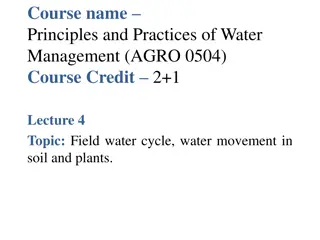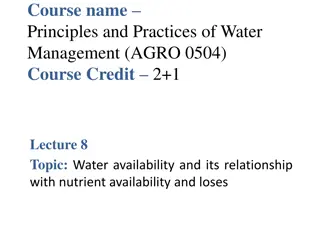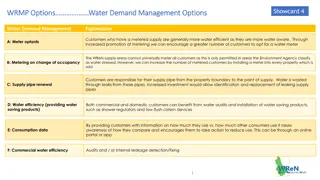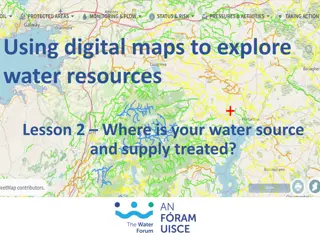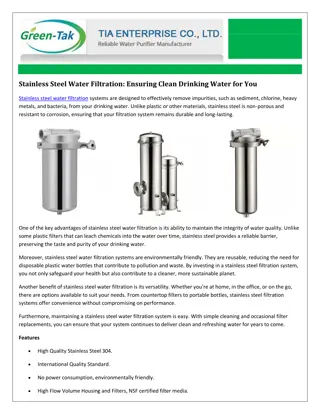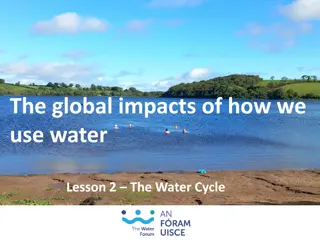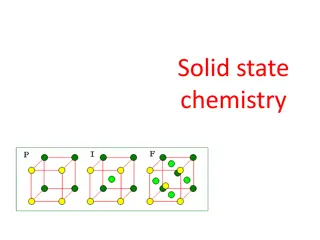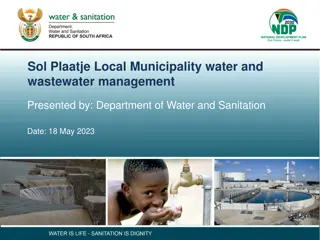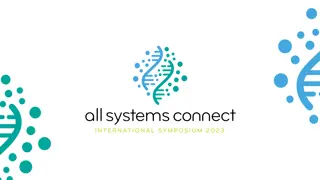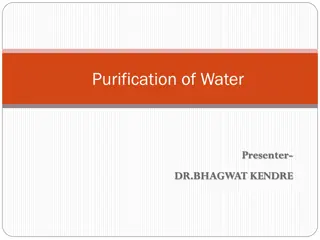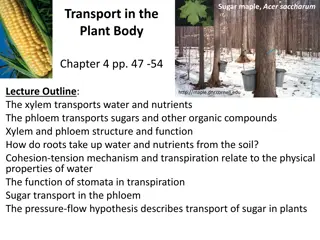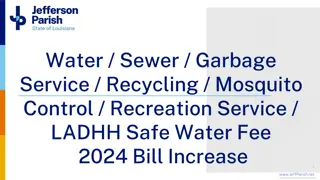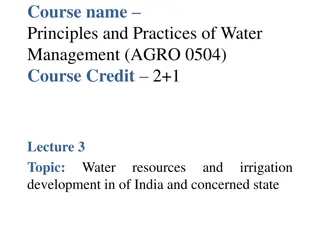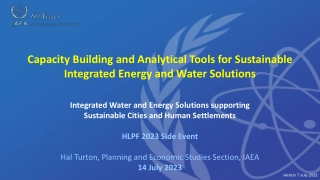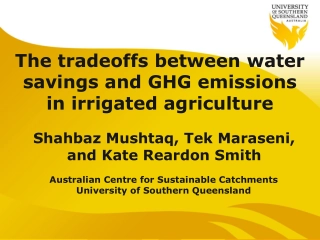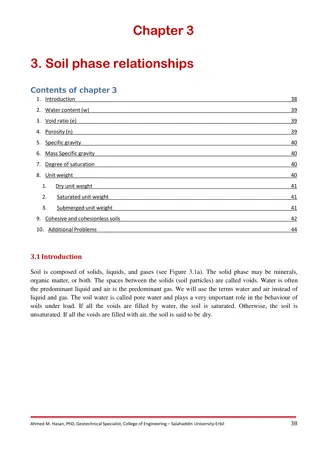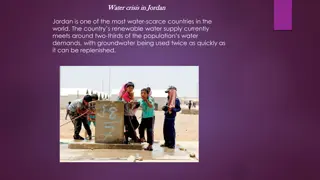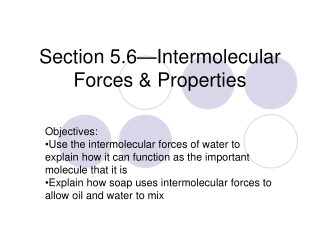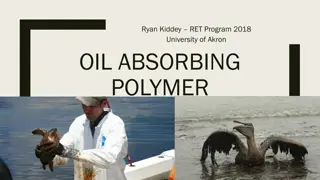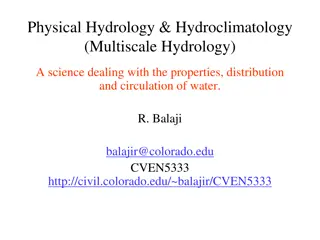Understanding Total Solids and Total Suspended Solids in Water
Learn about total solids and total suspended solids in water, including their definitions, implications on water quality and aquatic life, and factors affecting their levels. Total solids refer to matter suspended or dissolved in water, while total suspended solids are small solid particles that can be trapped by a filter. High concentrations of suspended solids can negatively impact water health and oxygen levels, affecting aquatic species. Various factors like flow rates, soil erosion, and urban runoff can influence total suspended solids levels in water bodies.
Understanding Total Solids and Total Suspended Solids in Water
PowerPoint presentation about 'Understanding Total Solids and Total Suspended Solids in Water'. This presentation describes the topic on Learn about total solids and total suspended solids in water, including their definitions, implications on water quality and aquatic life, and factors affecting their levels. Total solids refer to matter suspended or dissolved in water, while total suspended solids are small solid particles that can be trapped by a filter. High concentrations of suspended solids can negatively impact water health and oxygen levels, affecting aquatic species. Various factors like flow rates, soil erosion, and urban runoff can influence total suspended solids levels in water bodies.. Download this presentation absolutely free.
Presentation Transcript
Total Solids The term "total solids" refers to matter suspended or dissolved in water or wastewater. Total solids (also referred to as total residue) are the term used for material left in a container after evaporation and drying of a water sample. Total Solids includes both total suspended solids, the portion of total solids retained by a filter and total dissolved solids, the portion that passes through a filter.
A total suspended solid (TSS) refers to small solid particles which remain suspended in water and that can be trapped by a filter. TSS can include a wide variety of material, such as silt, decaying plant and animal matter, industrial wastes, and sewage. High concentrations of suspended solids can cause many problems for stream health and aquatic life.
TSSs are particles that are larger than 2 microns found in the water column. Anything smaller than 2 microns (average filter size) is considered a dissolved solid. Most suspended solids are made up of inorganic materials, though bacteria and algae can also contribute to the total solids concentration.
As levels of TSS increase, a water body begins to lose its ability to support a diversity of aquatic life. Suspended solids absorb heat from sunlight, which increases water temperature and subsequently decreases levels of dissolved oxygen (warmer water holds less oxygen than cooler water). Some cold water species, such as trout and stoneflies, are especially sensitive to changes in dissolved oxygen. Photosynthesis also decreases, since less light penetrates the water. As less oxygen is produced by plants and algae, there is a further drop in dissolved oxygen levels.
Most people consider water with a TSS concentration less than 20 mg/l to be clear. Water with TSS levels between 40 and 80 mg/l tends to appear cloudy, while water with concentrations over 150 mg/l usually appears dirty. The nature of the particles that comprise the suspended solids may cause these numbers to vary.
Factors Affecting Total Suspended Solids: High Flow Rates Soil Erosion Urban Runoff Wastewater and Septic System Effluent Decaying Plants and Animals Bottom-Feeding Fish
Measurement of Total Suspended Solids: The water sample is filtered through a pre-weighed filter. The residue retained on the filter is dried in an oven at 103 to 105 C until the weight of the filter no longer changes. The increase in weight of the filter represents the total suspended solids. TSS (mg/L) = ( [B-A]*103 ) /C Where: B = End weight of the filter A = Initial weight of the filter C = Volume of water filtered
Total Dissolved Solids: Dissolved solids" refer to any minerals, salts, metals, cations or anions dissolved in water. Total dissolved solids (TDS) comprise inorganic salts (principally calcium, magnesium, potassium, sodium, bicarbonates, chlorides and sulfates) and some small amounts of organic matter that are dissolved in water. TDS in drinking-water originate from natural sources, sewage, urban run-off, industrial wastewater, and chemicals used in the water treatment process, and the nature of the piping or hardware used to convey the water.
The presence of dissolved solids in water may affect its taste. The TDS level as follows: excellent, less than 300 mg/L; good, between 300 and 600 mg/L; fair, between 600 and 900 mg/L; poor, between 900 and 1200 mg/L; and unacceptable, greater than 1200 mg/L. Water with extremely low concentrations of TDS may also be unacceptable because of its flat, insipid taste.
Factors Affecting Total Dissolved Solids: Geology and Soil in the Watershed Urban Runoff Fertilizer Runoff Wastewater and Septic System Effluent Soil Erosion Decaying Plants and Animals
Measurement of Total Dissolved Solids: To measure TDS, the water sample is filtered, and then the filtrate (the water that passes through the filter) is evaporated in a pre-weighed dish and dried in an oven at 180 C, until the weight of the dish no longer changes. The increase in weight of the dish represents the total dissolved solids, and is reported in milligrams per liter (mg/l). TDS (mg/L) = ([A-B]*103)/C Where: A- Weight of clean dried container B- Weight of container and residue C- Volume of Sample (100 mls)


